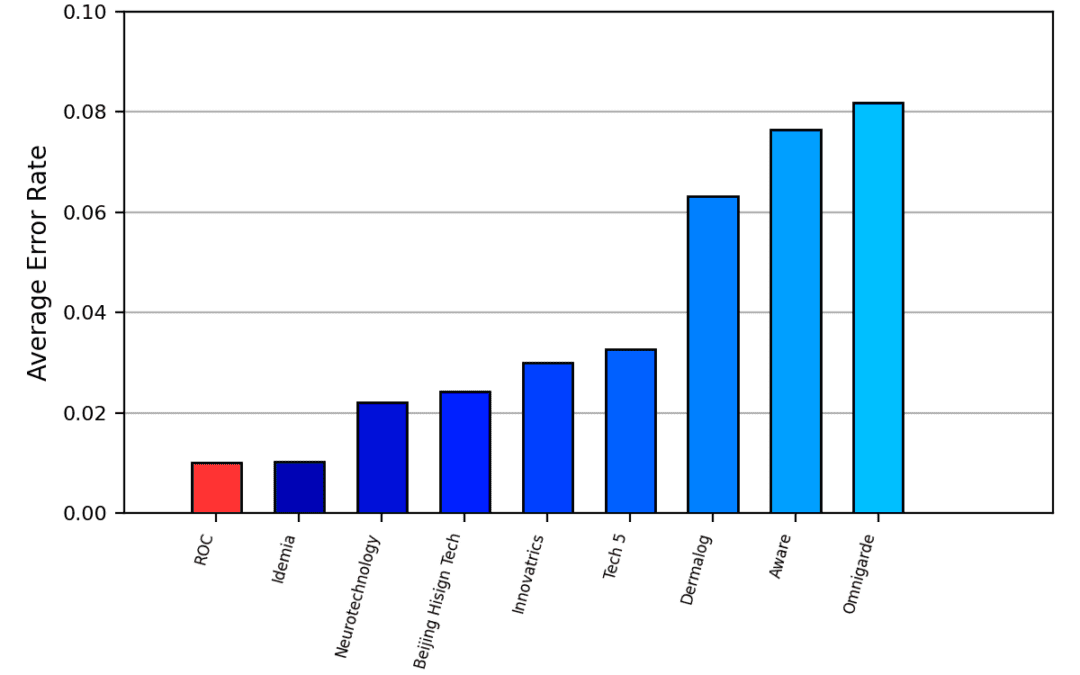ROC SDK v2.4 Fingerprint Analysis
The following report documents ROC AI’s performance in the National Institute of Standards and Technology (NIST) Proprietary Fingerprint Template (PFT) III benchmark. Competitor plots were generated on 6 February 2023.
With the exponential explosion in the capabilities of face recognition algorithms, focus has in many ways shifted from what has been the most authoritative biometric trait the last several decades: fingerprints.
While facial appearance has been the default biometric trait throughout all of human existence, this role has always been through innate, subconscious cognitive activity. When instead examining the systematic use of biometric traits for identification purposes, the history of fingerprint recognition is substantially larger than any other trait. And, from an automated biometric perspective, fingerprint recognition has long since held the distinction as the most trusted biometric.
Fingerprint recognition systems are used by nearly every country in the world for a range of critical identification infrastructure tasks. And while they provide extreme trust, they also contend with significant computational efficiency bottlenecks. Specifically, the comparison speed for fingerprint algorithms has historically been extremely slow. This is due to fingerprint recognition being treated as a point-set matching problem with minutiae location, orientation, and type being used as the point sets.
As the pattern recognition technology fully progresses in the modern era of deep learning, should fingerprint recognition systems still be bottlenecked by legacy constraints?
The answer is no, as fully demonstrated with the release of ROC AI’s new fingerprint recognition capabilities delivered in the ROC SDK v2.4.
ROC AI’s fingerprint solutions leverage the same trade secrets that have enabled ROC SDK face recognition capabilities to lead the industry in combined accuracy and efficiency for the last five years. The end result is a fingerprint algorithm that:
- Delivers best-in-class accuracy; and
- Operates at an efficiency range that resets expectations on the scalability of fingerprint systems.
The remainder of this article provides dense statistics from the National Institute of Standards and Technology (NIST) Proprietary Fingerprint Template (PFT) III benchmark.
Performance metrics for the ROC SDK v2.4 fingerprint algorithm, per NIST’s scorecard, are as follows:
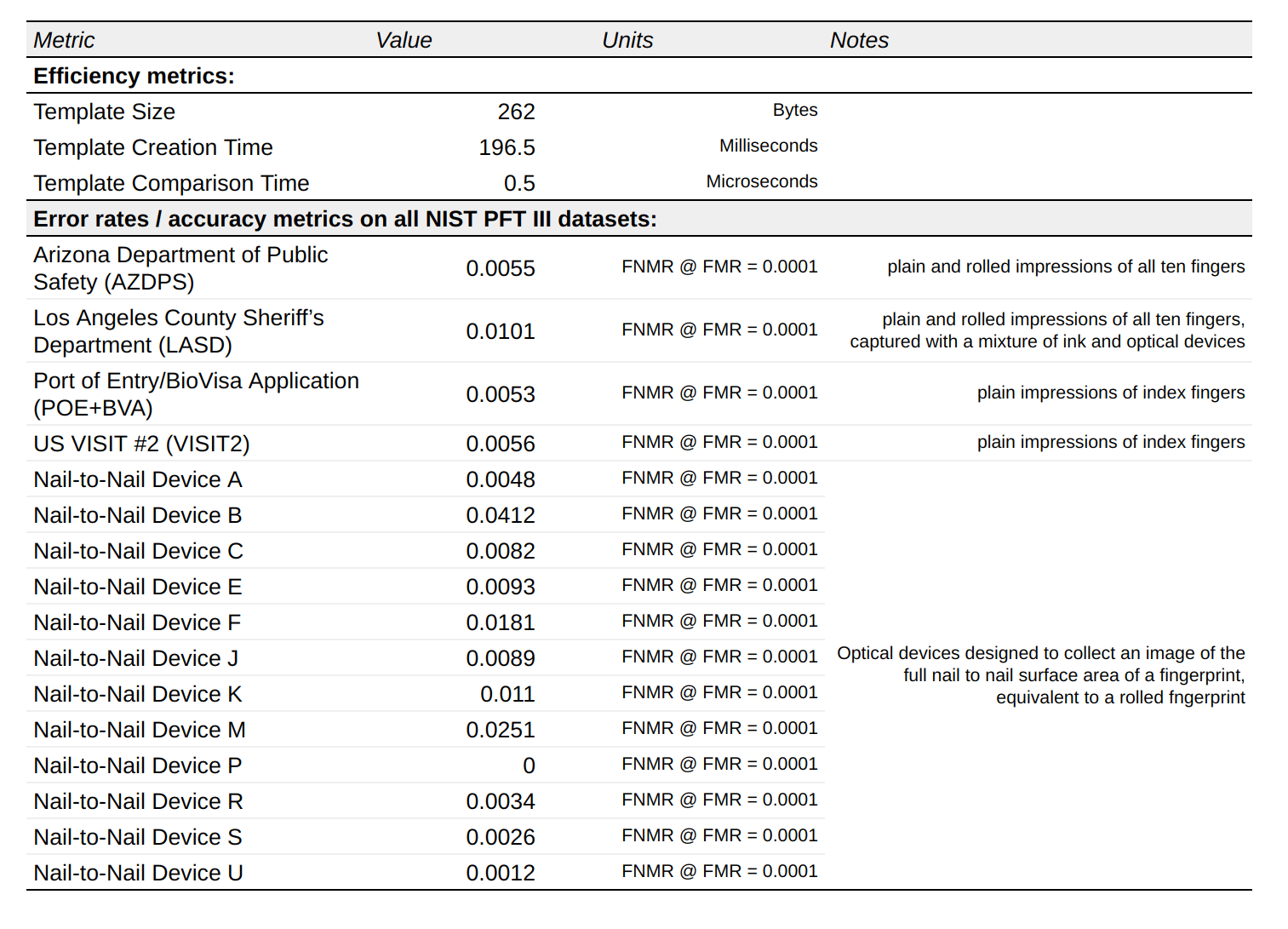
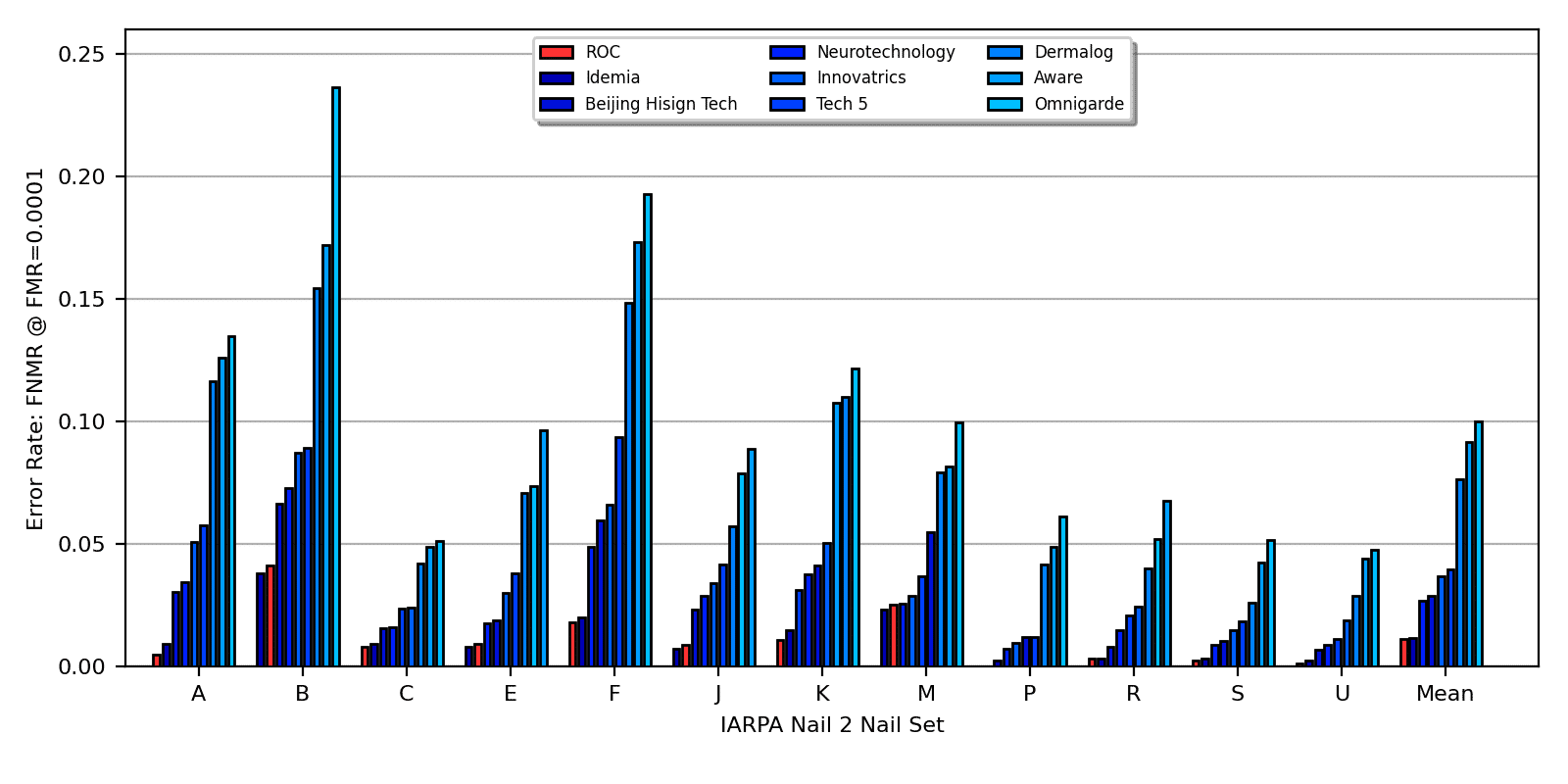
For the remaining PFT test sets, ROC AI was #2 in three of the four sets and top three in all sets:
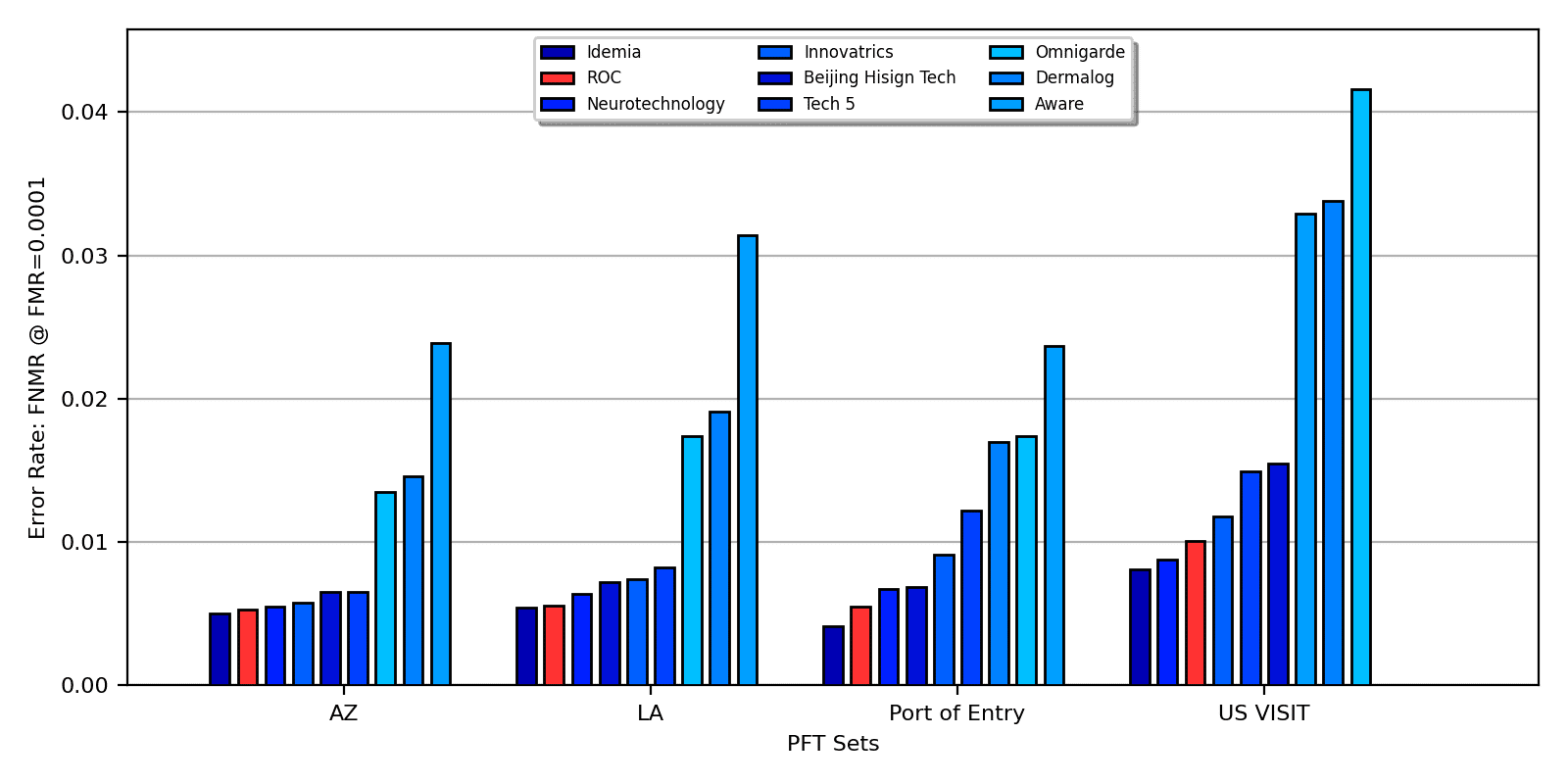
In terms of mean error rate across all PFT III test sets (all Nail-to-Nail sensors, AZ, LA, Port of Entry, and US VISIT), ROC AI has the lowest mean error rate of all vendors:
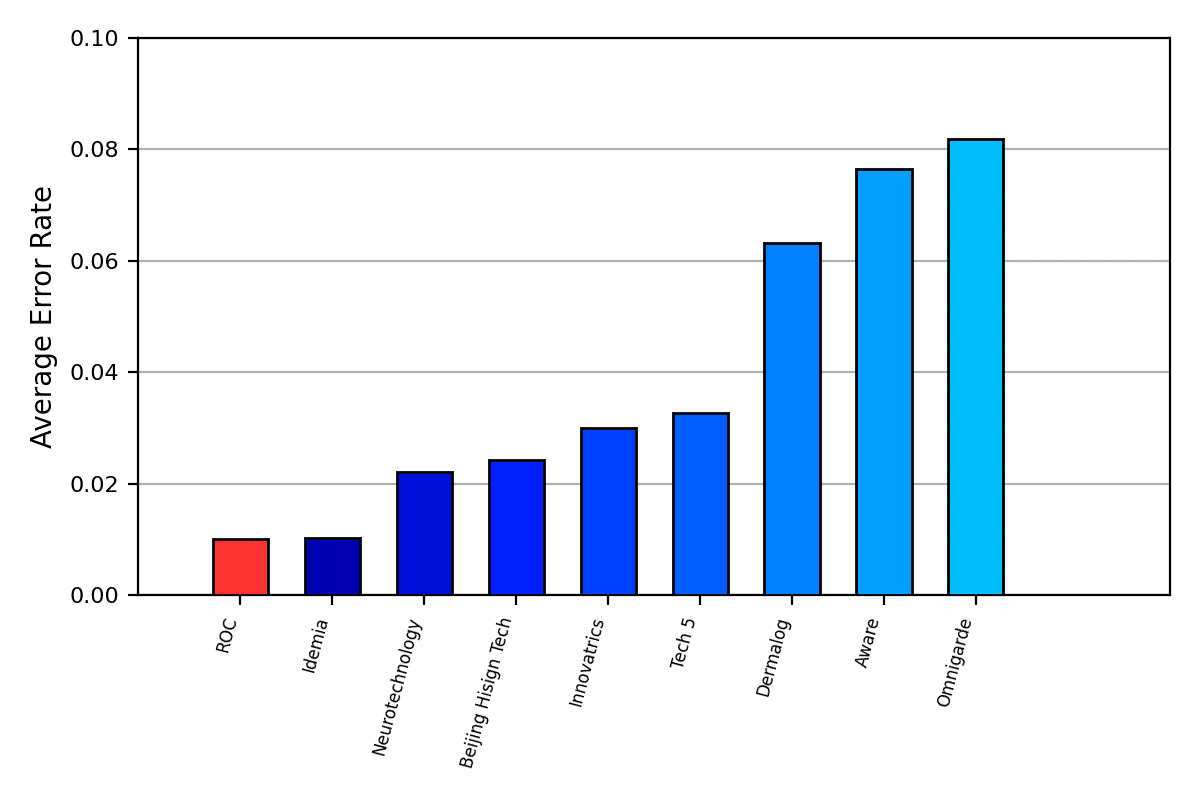
Of course, similar to all ROC AI algorithms, it is not just accuracy but also efficiency that sets ROC AI apart. In fingerprint this is also the case:

The ROC SDK v2.4 fingerprint algorithm uses a substantially smaller template than any other vendor in NIST PFT, and has the fastest comparison comparison speeds (more than 1000x faster than many key competitors).
The combination of lowest error rates and best computational efficiency truly puts ROC AI in a class of it’s own in the fingerprint industry:
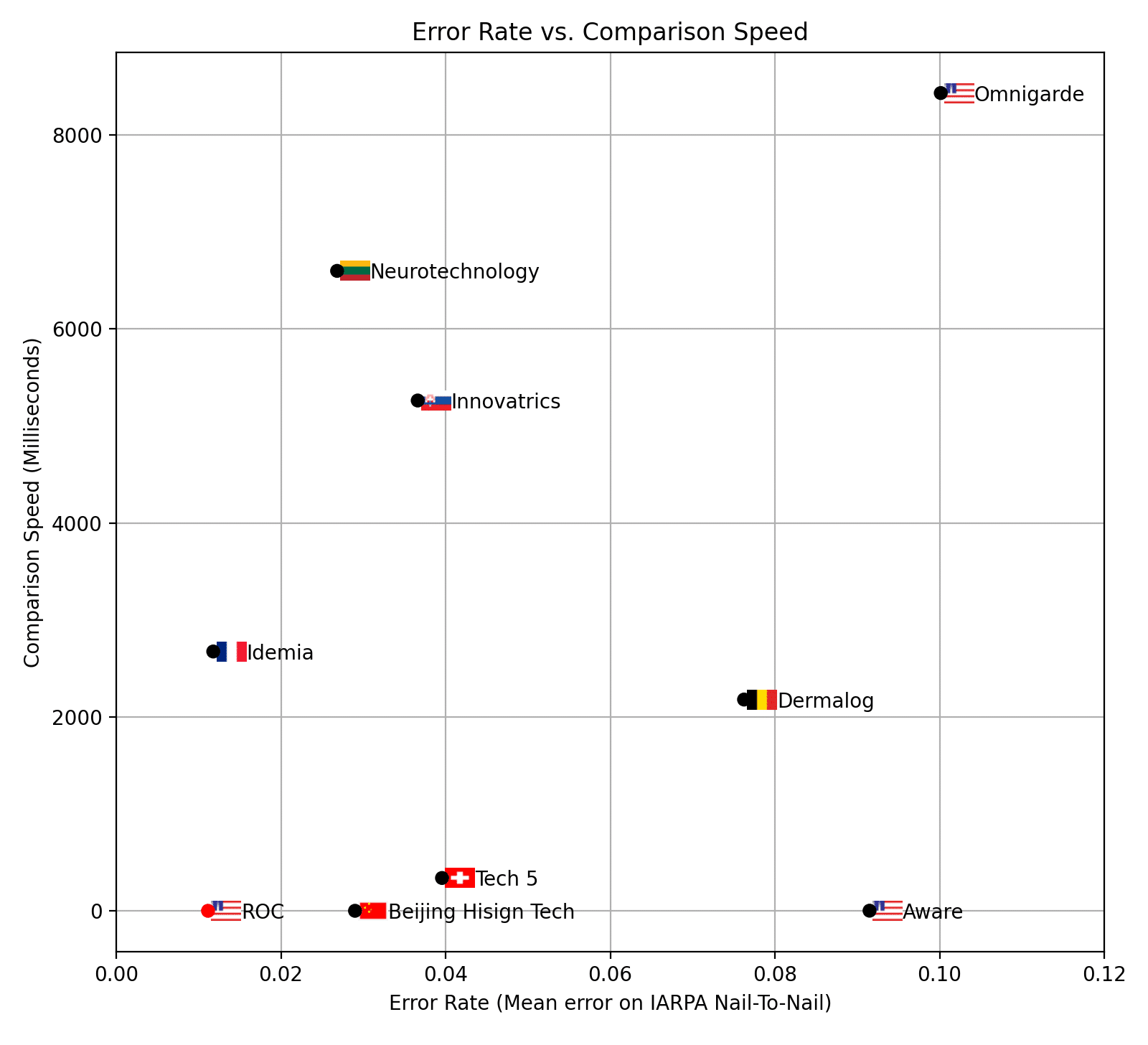
Indeed, no other vendor can match this combination. In addition to accuracy and efficiency distinctions, the ROC AI fingerprint algorithms, like all of our algorithms, are developed entirely “in-house”, by ROC AI employees, in the United States of America.
While the current ROC SDK v2.4 fingerprint algorithm catapults ROC AI to the top of the fingerprint capabilities in the world, it is important to remember that this is in fact the first fingerprint algorithm released by ROC AI. Similar to the pace of improvements delivered in face recognition, multiple new releases for fingerprint recognition will be delivered by ROC AI in 2023 and beyond. And, ROC AI will continue to provide our customer friendly “evergreen licensing” terms to our partners and customers.
Reach out now to start your journey toward integrating the best-in-class ROC AI fingerprint capabilities!
